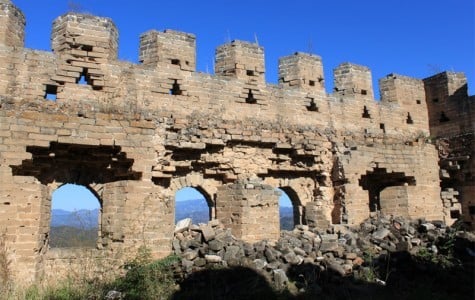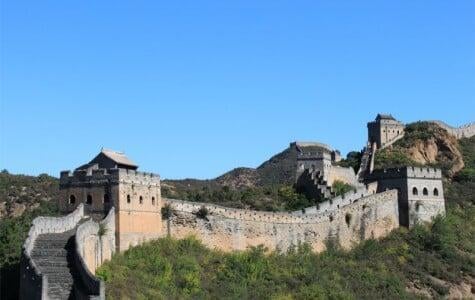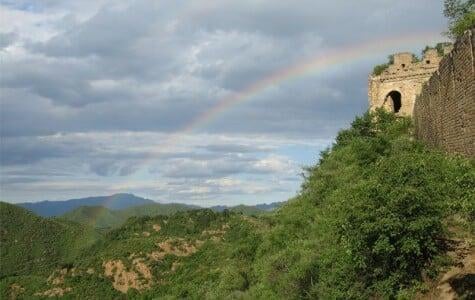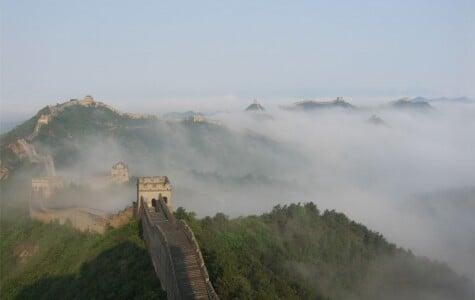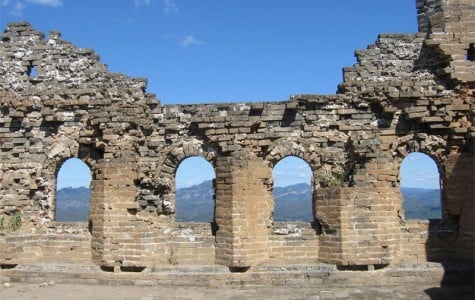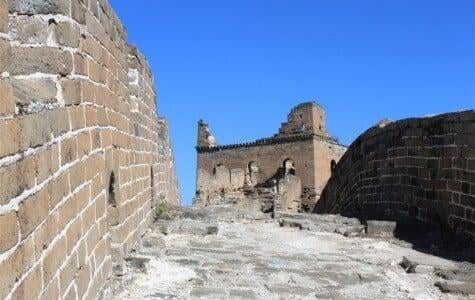Jinshanling Great Wall Overview
The Jinshanling Great Wall is located about 140 kilometers (87 miles) northeast of Beijing city, China. It is the best preserved part of the Great Wall in the Ming Dynasty (1368-1644) with many original features. Jinshanling connects to the Simatai section of the wall in the east and Gubeikou section in the west.
Dating back to the North Qi Dynasty (550-577), the wall, fortresses and passes were constructed in this area. You still can find the ruins of the wall in this period, mainly made of rammed earth. When the Ming Dynasty was established in 1368, General Xu Da was dispatched to rebuilt the wall between the Shanhaiguan Pass in the east and Juyongguan Pass in the west. Again in 1567, General Tan Lun and Qi Jiguang were appointed to guard the northern frontier of the capital in this area. Qi Jiguang spent 16 years to repair and reconstructed the wall of a total length of more than 1200 km in the northern frontier. The Jinshanling section is the best place we still can see the magnificent architectures of the Ming Dynasty. In terms of construction it is in no way inferior to the wall at Badaling. The Great Wall at the Jinshanling is seven meters high, six meters wide, and built of rectangular slabs of stone. The brick-paved walkway along the top of the wall is four meters wide and the crenellated openings two meters wide. In the merlons (the solid intervals between the crenels) there are small holes for observation and shooting arrows. There are also special openings between the crenels to insert flags for display or signal transmission.
The Jinshanling Great Wall is situated on the Big and Small Jinshan mountains, hence its name. It has an elevation of 700 meters. Based on huge stone bars, the Great Wall was then made by huge bricks, each of which weighed about 12 kilograms (26 pounds). It has five main passes, 67 watchtowers and 2 beacon towers. Every 100 meters (328 feet), there is an watch tower each of which is about ten meters (33 feet) high. Featuring various structures and having various functions, those watchtowers are either one-tiered or two-tiered. On the first floor there are some windows for shooting arrows. The roofs of the towers are many and varied, flat, arched, quadrangular or octagonal. Some are used to store weapons and hay. Others are used as soldiers’ bedrooms. Among them, the most celebrated are the Big and Small Jinshan Watchtowers.
Big & Small Jinshan Watchtower
The Big Jinshan Watchtower has two tiers which are connected by stone stairs. On the top of the tower is a small room used as the soldiers’ retiring room. This small room has a unique structure. The rafters and eaves of the room are all made from polished bricks. The Small Jinshan Watchtower was constructed by soldiers from Zhejiang and Jiangsu Provinces led by Qi Jiguang. To remind themselves of their hometowns, the tower was named Jinshan which was a pavilion’s name in the Jiangxin Island in Zhanjiang.
“General” “Black” & “Taochun” Towers
Activities at Jinshanling Great Wall
- Jinshanling Great Wall is the most popular hiking trip among all the sections of the wall around Beijing You can take a one-day hiking from Jinshangling to Simatai or reverse. This hiking trip can take up to 4 hours. Traveller’s Review on TripAdvisor
- Or you can do a two-day hiking including Gubeikou, Jinshanling and Simatai, in this case you have to stay one night at Jinshanling. The first day hiking from Gubeikou to Jinshanling can take 6 hours. At almost halfway toward Jinshanling, you have to get off the wall to avoid a military area. You will get back to the wall when you approach Jinshanling.
Travel Tips at Jinshanling Great Wall
- The popular hiking from Jinshanling to Simatai East will take up to 4 hours. The condition of the wall at the beginning toward Simatai are quite good. The condition of the wall begins to deteriorate soon and becomes quite rocky with loose stones and bricks. The wall is also very steep at a number of points, combined with loose stones, can become precarious. Jinshanling is a remote and isolated section of the Great Wall. Very few tourists make the longer trek out so you are most likely guaranteed a relatively peaceful walk. However, there are still drink and souvenir touts so you won’t be completely unaccompanied. In summer time (July & August) it’s very hot so prepare enough water.
- There are a group of local farmers waiting for the GUESTS when you approach the wall. The farmers make a living by selling souvenirs to tourists. They can give you help on the wall, as reward they will sell books, postcards or T-shirts to you. If you don’t like this, you have to say NO firmly at the very beginning, otherwise they can be very persistent and follow you all the way.
- Jinshanling is the best place to take photos of the Great Wall. There are different views at four seasons, as well as the sunrise, the sunset, the wall in a raining day or the wall with clouds. Keen photographers is definitely rewarded by the visit.
- Staying overnight or sleeping on the wall is not allowed anymore. Instead in summer time you can do camping at the foot of the wall. Staying at a local farmer’s house is another alternative.
- Snacks or water can be prepared at Beijing. There are a few farmers’ shops selling snacks and other drinks.
- Those with a fear of heights or vertigo issues are warned against this section. Also those who are very out-of-shape or overweight might want to visit a less precarious section, such as Badaling.
- It can be difficult to find a vehicle directly back to Beijing, so organize the transport before arrival.
Getting Jinshanling Great Wall
- At Beijing Dongzhimen Long Distance Bus Station, you can take the local bus to Gubeikou Township. Upon arrival at Gubeikou, you can employ alocal taxi at the bus station with CNY30 to Jinshanling in 30 minutes.
- Take bus No.980 to Miyun County from Beijing Dongzhimen Long Distance Bus Station (北京东直门长途汽车站). From Gulou Dajie Street in Miyun County, there are drivers lined up at the stop. You can negotiate with them by CNY 150-200 for a round trip for one car. You have to tell them you will pay the money after returning to this point, and they will wait for you at an agreed time either at Jinshanling or at Simatai. Download the Chinese version of the bus route
- It will cost around CNY 800 for a private taxi from downtown Beijing, and it will take 1.5 hours from Beijing to the wall since the new Beijing-Chengde Expressway was completed on 28 Sep 2009.
Dining & Accommodation
- Jinshan Restaurant
The government-run restaurant, as a affiliate of Jinshan Hotel
- Jinshan Hotel
Located at the foot of the wall, Jinshan Hotel is a government-run two star hotel. It has 62 rooms to accommodate about 130 guests. The rates varied from CNY 160 to 400 based on different types.Tel:86-314-8830222
- Local farmers’ guesthouse
You also can stay at local farmers’ guesthouse outside of the scenic area, the Hugulou Village. A basic twin room will cost CNY100-300 with shared shower.

